Expert Review
BMW 2 Series Active Tourer MPV (2017 - ) review
Read about the BMW 2 Series Active Tourer, the compact and practical family MPV with a premium twist
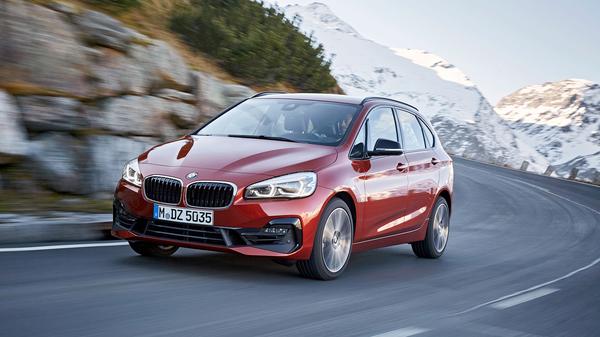

Words by: Ivan Aistrop

Additional words by: Auto Trader
Last updated on 26 November 2019 | 0 min read
The Auto Trader expert verdict:
3.4
As families flock to SUVs and crossovers it’s good to know manufacturers like BMW are sticking by the more practical MPV format, especially with a premium twist like that applied to the 2 Series Active Tourer. Beyond the sight of a BMW badge on an otherwise conventional, family car it’s a model that majors on function rather than flair but offers a wide range of engines, trim packages and even a plug-in hybrid option.
Reasons to buy:
- Sophisticated twist on familiar format
- Strong engine options across petrol, diesel and hybrid
- Desirable image for a family MPV
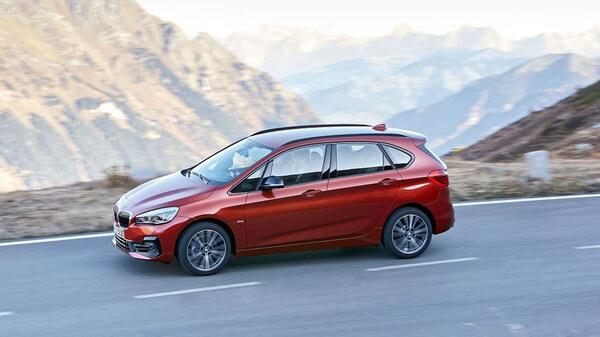
Running costs for a BMW 2 Series Active Tourer
The Active Tourer looks expensive compared with most five-seater MPVs, though now faces competition from the equivalently fancy Mercedes B-Class as premium rivals flock to this previously mainstream sector.
Against the likes of the VW Golf SV that blue and white badge makes your car more desirable and will help the car’s resale values stay solid, significantly reducing your whole-life running costs and keeping monthly finance rates lower than they’d otherwise be. The Active Tourer’s fuel consumption and CO2 figures are very competitive across the entire range of engines, while the plug-in hybrid 225xe has particular appeal in this regard.
Its clever technology means it can return three-figure mpg numbers according to official figures, while CO2 emissions are under 50g/km, which will go down well with company drivers. Just be aware the actual efficiency you end up getting will depend entirely on how regularly you charge it and how gently you drive it.
Expert rating: 3/5
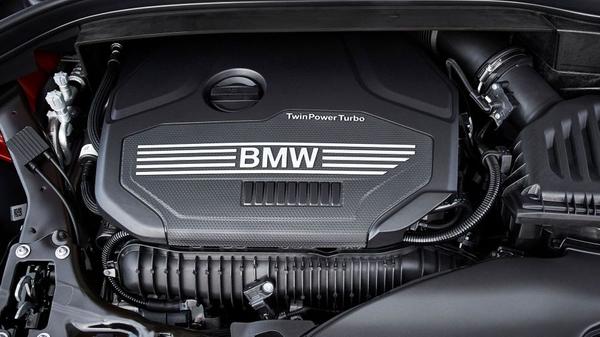
Reliability of a BMW 2 Series Active Tourer
There’s not a great deal of reliability data available on the Active Tourer. The model isn’t included in the Warranty Direct Reliability Index, although it should be noted that BMW sits well down the pecking order in the manufacturer rankings. The JD Power Vehicle Dependability study makes for even more concerning reading, as BMW finished stone-cold last in the manufacturer ratings in both 2017 and 2018. Our owner reviews paint a far more positive picture, though, with very few owners reporting any mechanical problems with their Active Tourers. And the car’s three-year/unlimited mileage warranty isn’t half bad, either.
Expert rating: 2/5
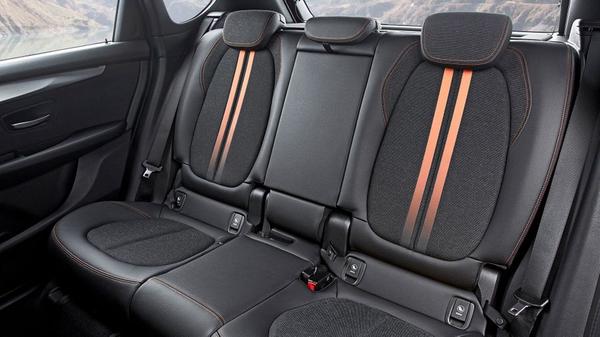
Safety for a BMW 2 Series Active Tourer
The 2 Series Active Tourer was updated in 2018 and safety equipment improved to include collision mitigation with automatic emergency braking at speeds up to 30mph, these a cost option previously. It’s still active at higher speeds, warning you with audible and visual signals if the system detects a potential collision. And when you do get on the brakes they’ll be ‘pre-charged’ for maximum stopping power and response. Stability control, rain-sensing wipers, automatic headlights and a selection of airbags are also standard, as are rear parking sensors.
It’s standard practice but still disappointing BMW expects you to pay extra for the more active safety technology such as lane departure warning, speed limit information and active cruise control with camera-monitored stop and go functionality to help in traffic. These are bundled into two levels of ‘Driving Assistant’ packages, fancier adaptive headlights and more sophisticated parking assistance features also cost-options.
Expert rating: 3/5
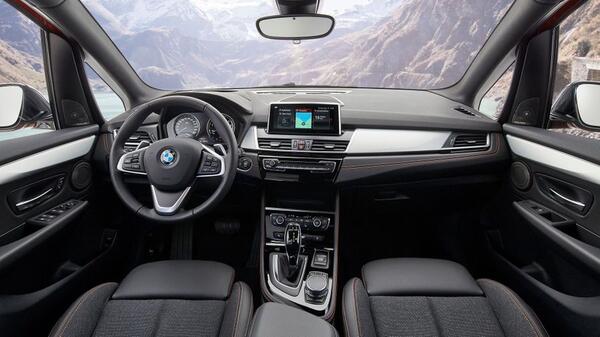
How comfortable is the BMW 2 Series Active Tourer
All five seats are surrounded by generous headroom and legroom, helped by the rather upright (yet perfectly comfortable) seating position. Shoulder room is a bit too snug for three adults to travel comfortably for long distances in the back, and the middle seat is narrower than those either side, too, but things should still be reasonably comfortable for short hops. Sport models get different front seats and a sliding rear bench is standard on all but SE, where it’s an option, and hybrids where it’s not available. Seats fold and split 40/20/40 for maximum flexibility. Power adjustment, heating and lumbar support are optional in a ‘comfort’ package.
The ride on the standard suspension does have a slightly firm edge to it over some lumps and bumps, an effect that’s exacerbated by choosing larger wheels. M Sport models get an even stiffer set-up, though you can delete this at no cost and keep the look with the standard suspension. If you can stretch to it the optional adaptive suspension gives the best of all worlds, with a self-explanatory Comfort mode for all-round use progressing to a Sport setting for increased body control in the bends.
Our one criticism is with the overly heavy steering – even in Comfort mode – which is great for handling, but less useful when you're inching it into a parking space or trying to negotiate a tricky three-point turn, like most MPVs will spend their time doing.
Expert rating: 4/5
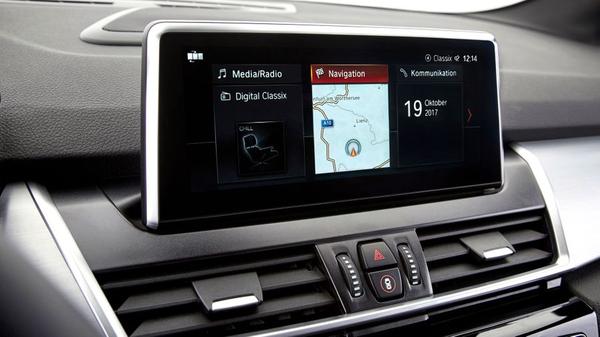
Features of the BMW 2 Series Active Tourer
Equipment levels have improved since the mid-life update and the range now progresses from entry-level SE through Sport, Luxury and M Sport, with an additional Premium option for the latter two also.
Dual-zone air-conditioning, an automatic tailgate, Bluetooth connectivity, DAB, navigation, switchable driving modes and rear parking sensors are standard on SE and up, Sport adding bigger wheels and gloss black trim elements inside and out. Sport seats are also included. Luxury goes for a more opulent vibe, with chrome trim outside and leather upholstery within.
M Sport really goes to down, with contrast stitching, various trim elements branded with the BMW performance division’s badge and stripes, a more aggressive body kit and stiffer suspension. This and the bigger wheels look good but comfort suffers, making this trim less appropriate for a family people carrier.
Expert rating: 4/5
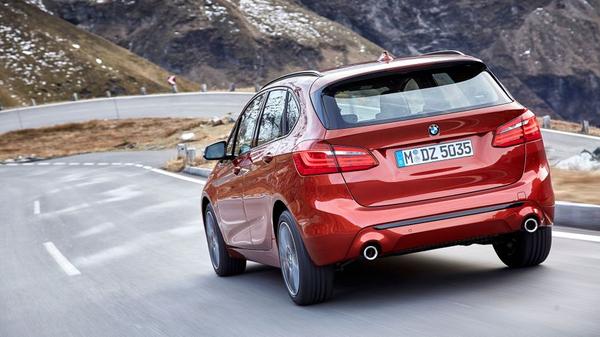
Power for a BMW 2 Series Active Tourer
There are plenty of engine options in petrol and diesel, meaning you can choose according to your priorities, location and driving style. Three-cylinder 218i petrols are frugal and have enough zip for town use; if you rack up bigger mileages the more powerful four-cylinder 220i versions may be more suitable. It’s a similar story with the diesels, the 216d delivering fleet-friendly CO2 figures, the 218d offering improved performance and the 220d the option of front- or four-wheel drive.
There are three distinct transmission options available too; the 218i and 216d come as standard with a six-speed manual, which you can upgrade to a fast-shifting seven-speed dual-clutch automatic if you choose. A ‘sport’ version of this gearbox is standard on 220i petrols. 218d models have the option of a smooth-shifting eight-speed automatic, which is standard on all 220d variants. Best combination? A 218d with the optional automatic is a good balance of performance, with better emissions than the manual that will be attractive to business users.
The 225xe plug-in hybrid version is distinct from all of the above, with a petrol motor driving the front wheels and an electric one powering the rears for an alternative take on the xDrive model’s four-wheel drive traction. The system cleverly and seamlessly alternates between the different power sources – or combines them – as necessary and you’ll struggle to tell the difference in the way it drives. Saying that, you do feel its extra weight occasionally, mainly when slowing down or stopping.
Expert rating: 4/5